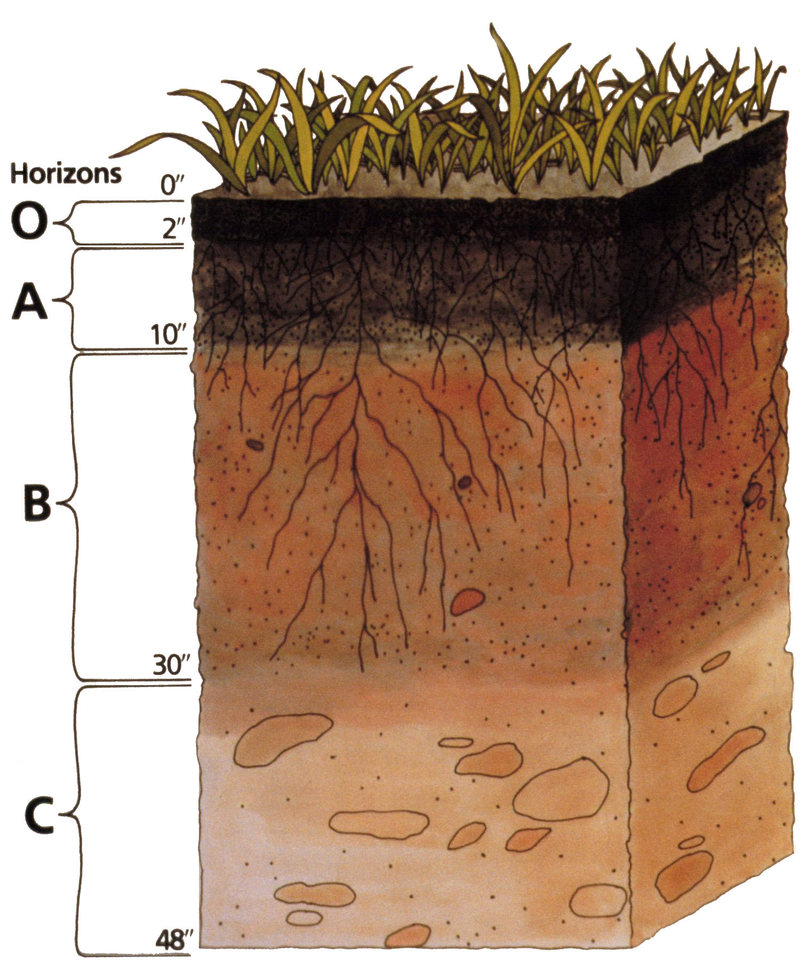7th Grade > Chemistry
SOIL MCQs
:
A
The different layers observed is due to the fact that soil is made up of different types of materials all of which have different sizes and weight. The lighter materials float on top and the heavier particles settle at the bottom.
:
C
Horizon O is a layer of partially decomposed organic matter lying above topsoil.
Horizon A is the topsoil. It is dark in colour due to the presence of large amount of humus. It makes the soil nutrient rich and fertile. The layer is soft, porous and can retain more water.
Horizon B is the layer below horizon A and has less quantity of humus but at the same time it contains more minerals.
Horizon C is the layer which is composed of partially eroded small lumps of rocks.
:
B
Soil on earth is formed as a result of continuous and long period of constant erosion and weathering of rocks. Large rocks break down to form soil. This is called weathering of rocks. Soil erosion breaks down large particles into smaller soil pieces.
:
A, B, C, and D
Wind, rainfall, temperature, light and humidity are the factors which affects the soil and its type in a certain region. These factors also affects the soil profile and bring changes in the soil structure.
:
A and B
Clayey and loamy soil both have fine particles and therefore they retain more water as compared to other types of soil. In other words, these soil types have low percolation rates. Hence crops like wheat and gram grow well in clayey and loamy soil.
:
B
The percolation rate can be used to determine the water holding capacity of different types of soils. Sandy soil is loosely packed and due to large air gaps the water flows faster through it.Hence, the sandy soil has the highest percolation rate.
:
A
Clayey soil has an important characteristic that it can retain water and moisture. Paddy, wheat and gram need a lot of water for their growth. Therefore, clayey soil is suitable for growing cereals like wheat and gram. Clayey is also rich in humus and other minerals which is also ideal for paddy and wheat.
So the statement is true.
:
D
Earthworms help increase the amount of air and water that gets into the soil, make it porous. They break down organic matter like leaves and grass into nutrients that plants can use. When they eat, they leave behind castings that are a valuable type of fertilizer. Earthworms are like free farm help.
:
C
Sandy soil consists of large particles. Interparticle spaces are also very large which prevents the soil from retaining water, making it hard for the roots of plants to establish. This type of soil is the least suited for cultivating crops.
:
B
Wheat requires clayey soil which can hold large amounts of water.
Paddy requires clayey soil with lots of humus content.
Lentils require loamy soils which can hold an average amount of water
Cotton requires sandy-loams to grow.

















